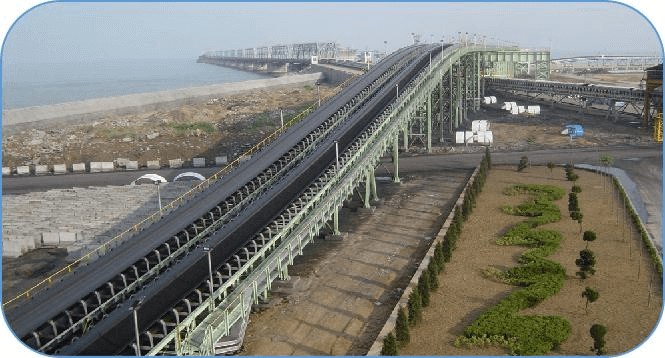News
Belt conveyors are widely used in various industries, including manufacturing, mining, and logistics, to automate the transportation of goods and materials. The belt conveyors can operate non-stop, allowing for a constant flow of materials throughout the production process. This continuous movement reduces downtime and ensures a smooth, efficient workflow.
Belt conveyors reduce the need for manual labor in moving materials, which reduces labor costs and the risk of workplace injuries. A safer working environment can lead to better employee satisfaction and higher productivity. The benefits of a belt conveyor are extensive; however, like any system, they require thoughtful design and planning to operate as efficiently as possible.
While belt conveyors are robust and durable, a few seemingly simple design considerations can shorten their lifespan, require more maintenance, and increase operational costs.
Factors That Impact a Conveyor Belt’s Performance
The design of a belt conveyor plays a crucial role in determining its productivity and overall performance. Several factors related to the design of a belt conveyor can impact its productivity:
● Belt material – The choice of belt material affects the durability, flexibility, and friction of the conveyor system. The right material can improve the conveyor’s efficiency, reduce maintenance requirements, and extend its lifespan. Common materials include rubber, fabric, and steel, each with its own advantages and limitations.
● Belt width – The width of the belt conveyor determines the capacity of the system. Wider belts can handle more products or larger-sized items, thus increasing the productivity of the conveyor system. However, wider belts may require more energy to operate and might not fit in space-constrained environments.
● Belt speed – The speed of the belt conveyor affects the throughput of materials, and faster belt speeds can increase productivity by moving more products per unit of time. However, excessively high speeds can lead to product damage, increased belt wear, and reduced operational safety.
● Incline or decline – A belt conveyor can be designed to move materials uphill or downhill. The angle of incline or decline will impact the load-bearing capacity and the required power to move materials. Steeper angles may require specialized belts or additional support structures to maintain productivity without compromising safety.
● Drive system and pulley design – The type and design of the drive system and pulleys determine the conveyor’s torque, speed, and energy efficiency. A well-designed drive system can improve productivity by ensuring smooth and consistent belt movement.
● Load support and idlers – Load support structures and idlers (rollers) help distribute the weight of materials on the belt and maintain proper belt tension. Properly designed load support and idler systems can reduce belt wear, minimize energy consumption, and ensure smooth operation, all contributing to higher productivity.

How to Increase Your Belt Conveyor’s Productivity
There are several strategies and improvements that can help increase the productivity of your conveyor belt system.
Ensure your Belt conveyor is well-maintained to prevent breakdowns and reduce wear. Regular inspections, timely lubrication, belt tension adjustments, and replacing worn-out parts can help maintain optimal performance and prolong the system’s life.
Adjust the belt speed to balance productivity and safety. Faster speeds can increase throughput, but excessive speed may lead to product damage or safety issues. Experiment with different speeds to find the optimal balance for your specific application.
Ensure that materials are evenly distributed on the conveyor belt to avoid overloading or imbalances that can reduce productivity. Utilize feeders, chutes, or other material handling equipment to optimize loading and distribution.
Review and optimize the conveyor system layout to minimize transfer points, reduce bottlenecks, and ensure a smooth flow of materials throughout the production process. This may involve reconfiguring the conveyor’s path, adjusting incline or decline angles, or integrating other material handling equipment.
Our company is committed to the design, development, manufacturing, installation, and maintenance of bulk conveying system equipment since 1986. The green intelligent conveying system independently designed and developed by RPIC(Rizhao Port Shipbuilding&Machinery Industry Co., Ltd) won the gold medal of the "Mayor's Cup" industrial design competition in Rizhao City, and was selected as a "specialized, refined, special and new" enterprise in Shandong Province.
Request a Free Estimate
